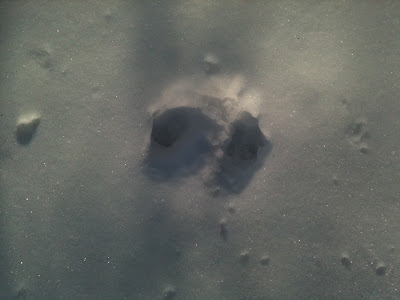I'm a lazy autumn gardener. A lot of gardening experts recommend leaving dead, dried stems and foliage on some plants for "winter interest." When I first heard about this "technique" a few years back, it became my formal explanation (excuse) for following the practice. In all honesty, I simply lacked enthusiasm for bothering to cut them back. This autumn laziness stands in stark contrast to my generally boundless energy in mid to late spring, when I spend as much time as I can in the garden.
But there's one plant I always cut back in autumn--Peonies (
Paeonia lactiflora). I just cut mine back today. The reason: Peonies are susceptible to wilt, a fungal disease, so it's important to cut off all the old growth and burn it or discard it. I've heard and read various opinions on how far back to cut the stems. Some experts recommend leaving a few inches above the ground; others say to prune to below the soil level. I usually leave about one to two inches of stem above ground. I leave cages around the stems, and pack lightly with Oak leaves. My theory is that this provides a structure of warmth under the mounds of snow that cover the plants from December through March.
Generally, I envy people who live in warm climates--they're comfortable and they can garden all year. But then I think about the plants I would miss out on if I lived further south, and that's a bit of a consolation. Some plants need a period of cool to cold winter dormancy in order to produce flowers and overall persist as perennial plants. Peonies are in that category.
I've had mixed luck with Peonies. Some years, the plants are overflowing with huge, fragrant blossoms. Other years, the flower heads are less plentiful. This last spring was one of the latter, in my garden at least. I think part of the reason was that we had a very mild, early spring. Peonies need plenty of sunlight to bloom. They usually bloom around here within two weeks before and after Memorial Day. This year, the Oak and other deciduous trees were leafed out early and shaded the Peonies in my garden a little too much. I still had blooms, just not as many.
I have two varieties of Peonies here. One was here when we arrived 11 years ago, the other I planted four years ago. The garden center labels are long gone, but I believe the cultivars are 'Sarah Bernhardt':
And 'Kelway's Gorgeous':
Peonies are a personal favorite, for so many reasons--they're beautiful, fragrant, impressively large flowers, and they're excellent additions to floral arrangements. As I prepare the plants for their winter nap, I'm remembering the color, bounty, and fragrance that will fill this space in late May and early June.














